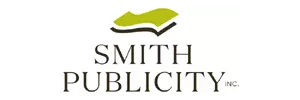What Publishers Want to Know About Your Book
Publishing is a business. In order for publishers (and authors) to make money, they need to sell books. So, when publishers look at a project they ask themselves: What is the market for this? Who would be interested? How many people comprise that segment of the population? How often do they buy books and for what reasons?
For nonfiction, you may want to identify the market even before you develop your content. This will help you identify needs not being met by your target market and help you develop more focused content. For fiction, identifying a market beforehand is not as much of a necessity, but upon completion it is just as important as nonfiction.
To identify your market, ask yourself the following questions.
- Who would be interested in this topic?
- What are they like? (What do they do for a living? Where do they live? What hobbies do they have? Etc.)
- How much money do they make, and what do they spend it on?
- Do they buy books and, if so, in what format and on what topics?
- Are they male or female and what is their nationality and cultural background?
- How large is this market?
- What organizations, associations, or publications cater to this market?
When answering these questions, be as specific as possible. When asked who your market is, you don’t want to respond with “anyone who reads” or “men.”
Not all people who read enjoy the same kind of books, and not all men are interested in the same topics.
Examples of a nonfiction market:
- Fortune 500 executives interested in global cuisine
- Stay at home mompreneurs
- Elementary teachers of special-needs children
Examples of a fiction market:
- Cozy mystery aficionados
- Fans of gritty crime novels
- Avid fantasy gamers
One of the best ways to identify your market is to define your genre and then research fan clubs, associations, and consumer groups affiliated with that topic. For example, Fortune 500 executives interested in global cuisine likely belong to frequent flyer clubs and read Condé Nast Traveler. You can locate information on the demographics of Condé Nast Traveler (and all other Condé Nast publications) through the information for advertisers on each publication’s respective website. Other options include business and lifestyle publications such as Worth or Forbes, which also have information available about their readers. The U.S. Bureau of Statistics also has data available on various demographic groups.
Fiction writers can locate market information by doing general searches for reading clubs and fan sites associated with the genre. You can also look into writers’ groups, both general and genre-based, to get more information on the market for your book. Identify the top authors in your genre and visit fan and community sites based on their work for more insight into your potential market.
For both fiction and nonfiction, you can also look at popular blogs and online communities to see who is participating and what topics are of interest to them.
Greenleaf Book Group is an independent publisher and distributor. Greenleaf partners with authors on every aspect of book development, including book creation, promotion, and retail distribution, and has produced more than 35 New York Times and Wall Street Journal bestsellers.

